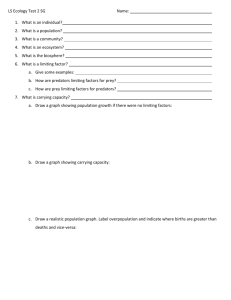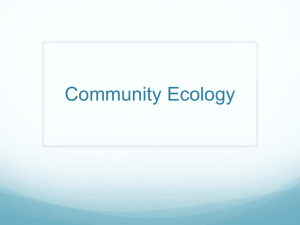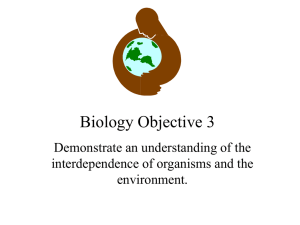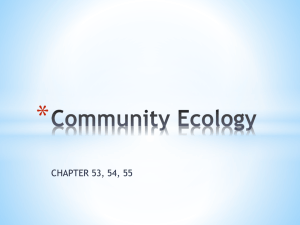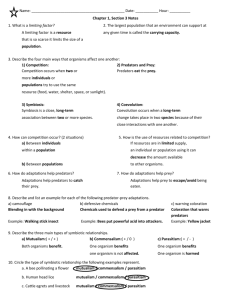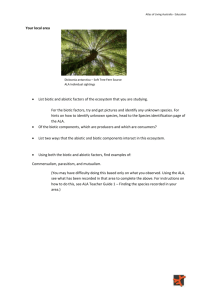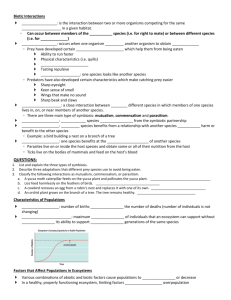Ecology Worksheet: Carrying Capacity & Interactions
advertisement
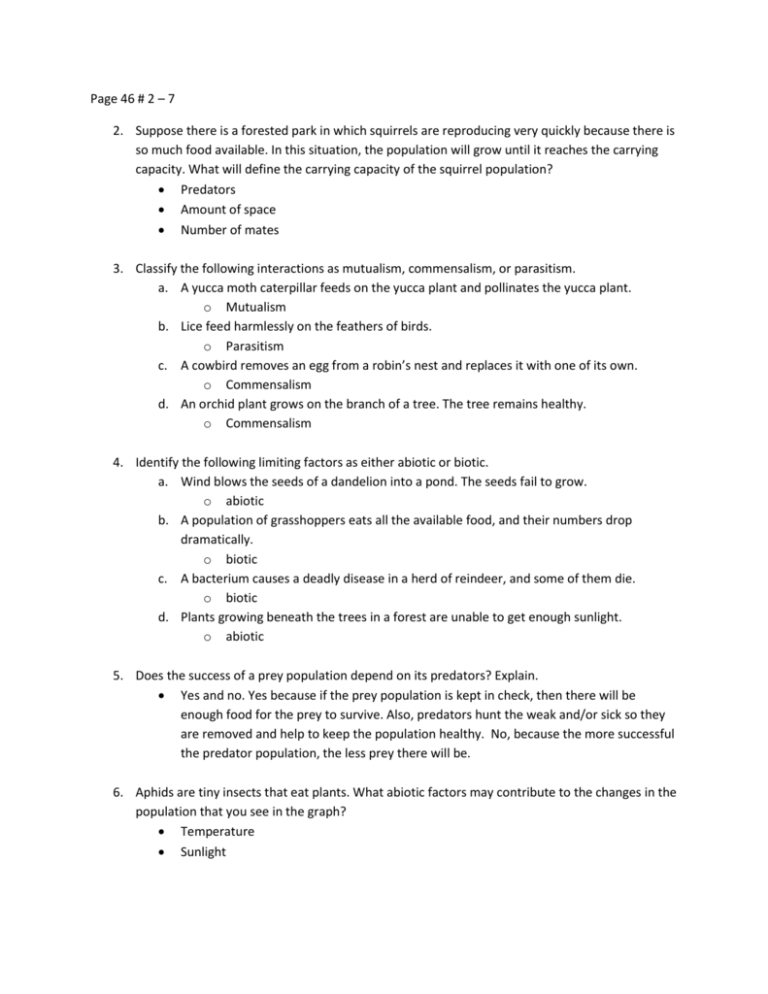
Page 46 # 2 – 7 2. Suppose there is a forested park in which squirrels are reproducing very quickly because there is so much food available. In this situation, the population will grow until it reaches the carrying capacity. What will define the carrying capacity of the squirrel population? Predators Amount of space Number of mates 3. Classify the following interactions as mutualism, commensalism, or parasitism. a. A yucca moth caterpillar feeds on the yucca plant and pollinates the yucca plant. o Mutualism b. Lice feed harmlessly on the feathers of birds. o Parasitism c. A cowbird removes an egg from a robin’s nest and replaces it with one of its own. o Commensalism d. An orchid plant grows on the branch of a tree. The tree remains healthy. o Commensalism 4. Identify the following limiting factors as either abiotic or biotic. a. Wind blows the seeds of a dandelion into a pond. The seeds fail to grow. o abiotic b. A population of grasshoppers eats all the available food, and their numbers drop dramatically. o biotic c. A bacterium causes a deadly disease in a herd of reindeer, and some of them die. o biotic d. Plants growing beneath the trees in a forest are unable to get enough sunlight. o abiotic 5. Does the success of a prey population depend on its predators? Explain. Yes and no. Yes because if the prey population is kept in check, then there will be enough food for the prey to survive. Also, predators hunt the weak and/or sick so they are removed and help to keep the population healthy. No, because the more successful the predator population, the less prey there will be. 6. Aphids are tiny insects that eat plants. What abiotic factors may contribute to the changes in the population that you see in the graph? Temperature Sunlight 7. Cockroaches are insects that reproduce very rapidly. Suggest reasons why the world is not covered in cockroaches. Predators Temperature/climate not appropriate for all species Use of pesticides to control populations



